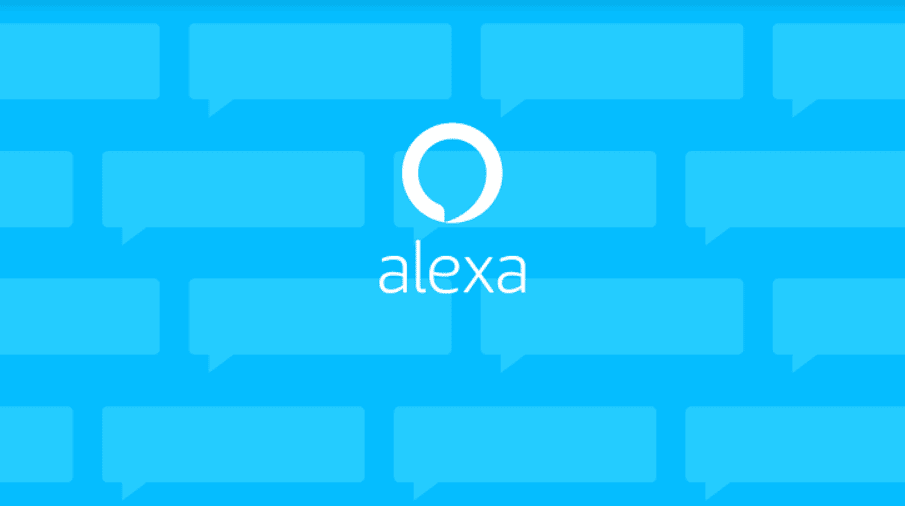The world we are living in is changing in response to the blockchain, as well as the cryptocurrency market presents opportunities the world has never seen. As a result, we’re left wondering how to mine cryptocurrency.
Cryptocurrencies like Bitcoin and Altcoins Like Litecoin, Matic , Dogecoin have a lot to teach us. Their origins, operation, and prospective impact on the future of our civilization, among other things.
But now we’ll talk about cryptocurrency mining, which is among the most crucial aspects of their growth.
Let’s look at how traditional currencies get into circulation to discover how cryptocurrencies get started.
What is Bitcoin Mining?
Bitcoin mining is the process of validating crypto transactions by solving complicated mathematical equations. Miners receive a fraction of a Bitcoin in exchange, allowing more currencies to be released onto the market.
As a result, there are two primary motivations for Bitcoin mining:
- Block rewards will be used to inject more Bitcoin into the market.
- To resolve the issue of double-spending by validating transactions.
One of the most important features of Bitcoin is that there is a limit to the number of coins that can exist – 21 million. With 900 new Bitcoin being generated every day, about 90% of them are already in circulation. No one can create more Bitcoins once all of them have been issued.
However, as the amount approaches 21 million caps, mining becomes more difficult.
The amount of Bitcoins produced from mining a block is cut in 50% every four years. In the crypto industry, this is referred to as halving.
The prize for the first Bitcoin transaction was 50 BTC. In 2012, the prize was reduced to 25 dollars. In 2016, it was reduced to 12.5, and in May 2020, it was reduced to 6.25 BTC per block.
In 2024, the Bitcoin block-mining incentive will halve to 3.175.
The halving is intended to reduce the number of released BTC, while demand remains stable, allowing the price to rise in general. Miners will no longer accept block reward once all BTC has been mined, but will instead be compensated through transaction cost.
However, not all cryptocurrencies necessitate transaction validation through mining.
The Proof-of-Work model is what Bitcoin employs. However, that isn’t the only consensus algorithm available. Coins like NEO, Tezos, Cosmos, Cardano, and EOS use a Proof-of-Stake system (or a version of it) instead of PoW. As a result, they are stacking coins rather than mineable cryptocurrencies.
Understanding Proof-of-Work and Proof-of-Stake
One of the most important aspects of blockchain technology is the Proof of Work (PoW) system. Most cryptocurrencies, like Bitcoin and Ethereum, utilise it. However, with Ethereum, things are changing.
The Developing team has been announcing for years that Ethereum will switch from PoW to PoS, and that the transition will begin in December 2020. With the completion of Etherum 2.0 in 2022, the community expects Ethereum to fully transition to PoS.
Despite the fact that Ethereum Staking has been available since December 2020, stakes are not currently verifying Ethereum transactions. However, transaction validation and transfers will be possible once Ethereum 1.0 docks as a parachain to Ethereum 2.0 in 2022.
How does PoW work?
We’ll go through the algorithm in greater detail because Bitcoin is the most well-known cryptocurrency that uses PoW.
A memory pool is used to store all of the transactions on the Bitcoin blockchain . And each and every one of these transactions must be verified.
This is where the mining industry comes into play.
Every block in the blockchain has a 64-character encryption hash value that the miner must figure out. The transactions can then be verified and added to the next accessible block.
Miners employ sheer computational power to determine the hash value of the previous block.
Their system tries each number until it discovers the entire hash value. When a miner discovers something new, he broadcasts it to the network so that other nodes can verify it and generate a new block.
One of the PoW algorithm’s key advantages is its resistance to attacks. To successfully attack a huge PoW system, you’d need to control 51% of the network’s processing power.
As well as the costs of doing just that would be more than the potential benefit from the entire attack.
Individual miners are finding it hard to keep track with the ever-increasing demand for computational power. Significant and ongoing investments are required to upgrade their rigs. This increased the centralization of mining rigs, which goes against the blockchain’s core idea of decentralisation.
How does PoS work?
While a more power rig is required to mine quicker in a PoW system, this is not the case with a PoS system. A person’s holdings of coins can be used to validate block transactions.
Because all crypto coins have already been produced in PoS systems, there is no need to create new ones. This eliminates the need to handle complicated riddles while also saving a significant amount of energy.
The way users earn crypto currencies is another distinction between the two methods. In a PoW system, miners are compensated with segments of their mined block as well as transaction fees, whereas in a PoS system, users are only compensated with transaction fees.
A minimal stake and device are required to run a nodes in a Proof of Stake ecosystem.
The minimum stake varies for each network, and is particularly dependent on the value of the network’s coin. To start a Tezos staking node, you’ll need 32 ETH and 8,000 TZX.
In general, a laptop might accomplish the task, but putting it up can be difficult, and maintaining a node necessitates uptime.
Those who don’t want to set up their own staking node can simply acquire a hardware device with a pre-installed node from companies like AVADO.
You can also delegate your stake rather than running your node in various staking scenarios. You also won’t have to be concerned about downtime.
Which one is better?
Whereas the POW algorithm is widely thought to be more safe, PoS is a more scalable option with a superior long-term strategy.
Even though some believe PoS systems are more vulnerable to a 51 percent attack, this will generate significant price changes in the coin. It might not even be worth it, given the stakes involved in successfully attacking the network.
Even yet, picking a winner is difficult.
However, as Ethereum moves from PoW to PoS and the energy conservation trend continues, Proof of Stake is becoming increasingly popular.
Nevertheless, Proof of Work appears to be far from over. Bitcoin is the most popular cryptocurrency, and leaders such as Elon Musk are aiming to sponsor energy-efficient solutions to reduce BTC mining’s resource usage.
Types of cryptocurrency mining
There are currently four methods for mining cryptocurrency.
Cloud Mining
Cloud mining is the most convenient and effective way to mine cryptocurrency.
Cloud mining allows you to rent a mining rig for a set length of time and receive all of the rig’s revenue minus the electricity costs and maintenance.
This appears to be a fantastic mining strategy in theory. Cloud mining, on the other hand, is one of the riskiest mining methods.Ponzi schemes abound in cloud mining businesses, with OneCoin and
Bitcoin Savings & Trust only two instances.
These companies would pay elder users with the original investment from new members. After a period, all payments to customers would halt, and the business would shut down. And because each consumer only loses a few hundred dollars, most don’t even file a complaint.
Although legitimate cloud mining services exist, most experts advise against utilising them.
CPU Mining
CPU mining mines coins using the processor of a computer or smartphone.
CPU mining used to be a practical and efficient method when bitcoins were a new notion. However, CPU mining is now used by a small number of people. And the majority of those that do do so because they haven’t done their homework.
First and foremost, CPU mining is incredibly time consuming. It could take several months for you to start making some money.
Second, your electricity bill will soar, and your wages will fall well short of supporting it. Finally, CPU mining necessitates extensive cooling, which adds to the required investment.
Not to mention the possibility of your CPU being fried. This is especially true if you’re mining on a laptop.
However, this does not rule out the possibility of CPU mining.
Monero and Dogecoin, for example, are two crypto coins that can be mined using a CPU. Just make absolutely sure you do your homework before attempting CPU mining so you don’t end up needing to purchase a new processor.
GPU Mining
Because GPU mining is both dependable and inexpensive, it is by far the most popular technique of cryptocurrency mining.
While purchasing the rig itself would take a significant investment, once you have it, you will gradually begin to earn. To mine cryptocurrency with GPU mining, you’ll need between 2 and 8 graphics cards to get started.
A CPU, motherboard, rig frame, and cooling system will also be required.
GPU mining is popular because it is both efficient and inexpensive. Don’t get me wrong: the rig’s build is expensive, but the GPU mining setup is amazing in terms of hash speed and general manpower.
However, if you don’t want to, you don’t have to create your GPU mining equipment. You can simply purchase one that has already been constructed. They are usually priced in the $3,000 range.
ASIC Mining
ASICs (Application-Specific Integrated Circuits) are circuits designed specifically for mining cryptocurrencies.
ASICs are monsters when compared to other forms of mining. They’re cheap, and they’re significantly faster than GPUs or CPUs in mining.
They are, however, a hot topic of debate. ASIC mining rigs allow entrepreneurs to centralise their operations by allowing them to establish large mining farms at a reasonable cost. This also allows them to make huge profit margins and have some control over the cryptocurrency’s development.
A large sufficient mining farm could allow a single person to make the majority of the income from a certain currency, rendering the entire mining process unequal. It’s basically a pay-to-win situation.
To tackle this, some developers intend to change the coding of various cryptocurrency to make ASIC miners lesser effective, whereas others intend to outright ban ASIC miners.
Is cryptocurrency mining profitable?
You’ll need a lot of computational power to mine bitcoins successfully.
Bitcoin mining used to be really straightforward. A laptop or PC was all you needed. Anyone could do it, but because the coins had no real worth, few individuals did it.
However, as the difficulty of the blocks grew, the mining process became so resource-intensive that high-performance GPUs were necessary.
As the block difficulty continued to rise, ASIC miners became the only method to mine Bitcoin successfully.
Of course, modest machines can still mine a variety of coins. Some of them have even made it their mission to outlaw ASIC mining completely.
However, before deciding whether mining cryptocurrency is worthwhile and profitable, you must evaluate a number of factors.
If you asked most miners in 2019 if Bitcoin mining is worthwhile, they would almost certainly say no. However, mining cryptocurrency has become fairly profitable, with BTC approaching 60k and Eth exceeding 3k despite having the highest processing fees.
The costs are exorbitant, and the difficulty is equally so. So, and in these market conditions, if your installation isn’t powerful and efficient enough, you could still lose money.
Because of the difficulties of mining, efficiency is essential. The complexity of the algorithm you must solve as a miner is determined when you create a new transaction block.
Mining other recently minted cryptocurrencies could also bring in some extra cash, and the difficulty is sometimes much lower.
After you’ve decided on a cryptocurrency, you’ll really would like to look into purchasing a suitable rig, as there are many possibilities on the ASIC market. You may always use one of the many online multiple currency calculators to figure out what the param is.
Not all hope is lost if you determine that the operational expenditures are too expensive yet still want to play the game. You could always enter a mining pool and mine blocks alongside other miners.
In general, the mining operations’ profitability is associated with four primary factors:
- Difficulty
- Rewards
- Rate of Hashing
- Costs of operation.
Last but not least, make sure your expectations are acceptable.
Crypto mining is now a commercial venture.
People and businesses alike are putting their money into mining. Crypto mining should grow even more successful and profitable as time goes on, especially if specialised cryptocurrency mining rigs become more affordable.
Also, please remember that pricing and processing fees are subject to change at any time.
What can cryptocurrencies be mined?
As previously stated, most cryptocurrencies that employ the Proof-of-Work algorithm can be mined.
The following are a few of the greatest cryptocurrencies to mine:
- Ethereum (ETH) – 2 ETH/block reward
- Ethereum Classic (ETC) – 3.2 ETC/block reward
- ZCash (ZEC) – 2.5 ZEC/block reward
- Grin (GRIN) – 60 GRIN/block reward
- Monero (XMR) – 2.15 MXR/block reward
- RavenCoin (RVN) – 5,000 RVN per block reward
However, if you are ready to invest in some serious ASIC equipment, you can mine Bitcoin.
What do I need to start crypto mining?
Before you begin mining, there are a few items to cross off your to-do list.
First and foremost, you’ll require a wallet that is compatible with the cryptocurrency you intend to mine. This will aid in the safe storage of your coins. There are a variety of wallets available, including hardware, desktop, mobile, and web wallets.
After that, depending on the coin you choose, you’ll need official or third-party cryptocurrency mining programs.
You’ll also need an online subscription if you decide to join a mining pool. You can also exchange virtual coins by becoming a member of an online crypto exchange.
Last but not least, make sure you have a constant and steady connection to the internet.
It’s advised that you keep your hardware mining setup (whether it’s made up of ASICs or just a CPU/GPU) in a well-ventilated, high-temperature environment.



